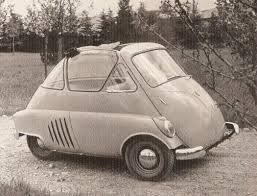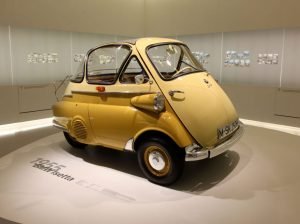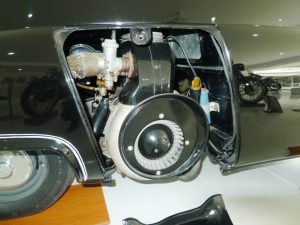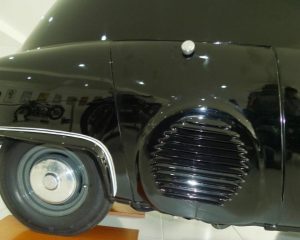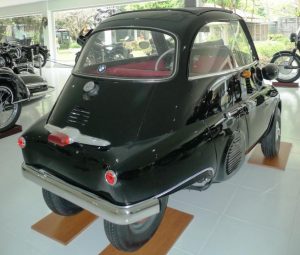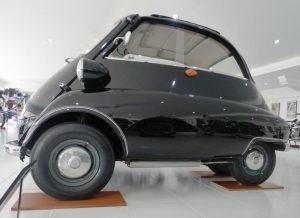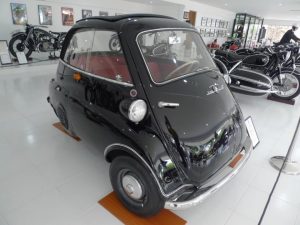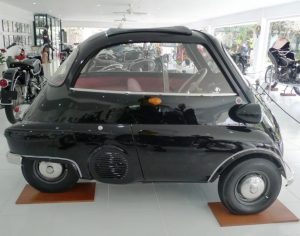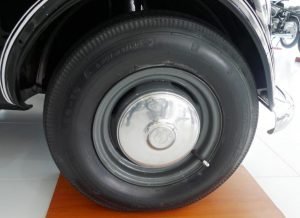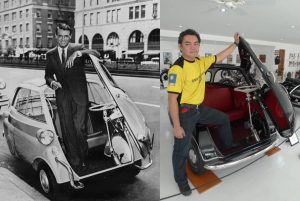Cheap and affordable short-distance transportation became a necessity after the Second World War. A micro-car was seen as a better alternative because it offered weather protection than motorcycles and scooters. Italian carmaker Iso came out with the Isetta, and it became so successful and influential as a city car that it was built in other countries, including Spain, Belgium, France, Brazil, Germany, and the United Kingdom. Because of its egg shape and bubble-like windows, the Isetta became more popularly known as a bubble car.
In April 1955, Bavarian Motor Works (BMW) came out with their version of the Isetta. The BMW Isetta Moto Coupe was so heavily re-engineered by BMW that its parts are NOT interchangeable with the Iso Isetta. While retaining the “Bubble Window” styling of the Italian micro-car, the BMW Isetta had headlamps that were fixed separately to the sides of the bodywork as it carried the BMW badge below the windscreen. The front suspension was also changed.
The Bavarian micro-car was powered by a modified version of the 250 cc four-stroke single-cylinder engine from the BMW R25/3 motorcycle that generated 12 horsepower at 5,800 rpm. Compared to the motorcycle engine, the Isetta’s aluminum cylinder head was rotated 180° and the twin-bearing crankshaft was larger and featured reinforced bearings to accommodate the heavy Dynastart combined dynamo and electric starter. BMW used a Bing sliding throttle side draft motorcycle carburetor to deliver the fuel and a larger oil sump, and a radial fan and shrouded ducting to help cool the engine.
Power was transferred to a 4-speed gearbox and then to the two rear wheels through two Hardy discs separated by a cardan shaft, then to an oil-bathed duplex chain that is attached to a rigid shaft, which is attached to the two rear wheels. This elaborate delivery of power freed the engine-gearbox of tension and soundproofed its linkage to the rear axle.
The BMW Isetta 250 could be driven with a motorcycle license. Its top speed was rated at 85 km/h and it was the first mass-production car in the world to return a fuel mileage of 33.33 kilometers per liter. Some 10,000 BMW Isetta 250s were produced between April and December 1955.
In 1956, the German government changed the regulations for motor vehicles stipulating that Class IV licenses could only be used to operate small motorcycles and could no longer be used to operate motor vehicles with a capacity of less than 250 cc. At the same time, the maximum capacity allowed for the Isetta’s tax category was 300 cc. Class IV licenses issued before the change in the regulations were grandfathered and allowed to be used as before. This change in regulations encouraged BMW to revise their micro-cars.
The company introduced the BMW Isetta Moto Coupe DeLuxe where the bubble windows were replaced by longer, sliding side windows. The engine displacement was enlarged to 298 cc and the compression was raised from 6.8 to 7.0:1, which increased power output to 13 hp at 5,200 rpm and torque to 18.4 Nm at 4,600 rpm. The top speed remained at 85 km/h but there was a marked increase in drivability, especially on hills, and in flexibility.
In May 1962, three years after launching the conventionally modern-looking BMW 700, the production of BMW Isettas ceased with a total of 161,728 units built. The shiny black 1959 BMW Isetta Moto Coupe DeLuxe 300 you see here has been meticulously restored to factory original specifications. The red interior and all the controls maintain their originality. Even the white double pinstripe has been meticulously applied. It is displayed at the Casa Corazon Resort and Museum along the boundary of Calaca and Lemery towns in the Batangas province.
 Power Wheels Magazine A Notch Above
Power Wheels Magazine A Notch Above

